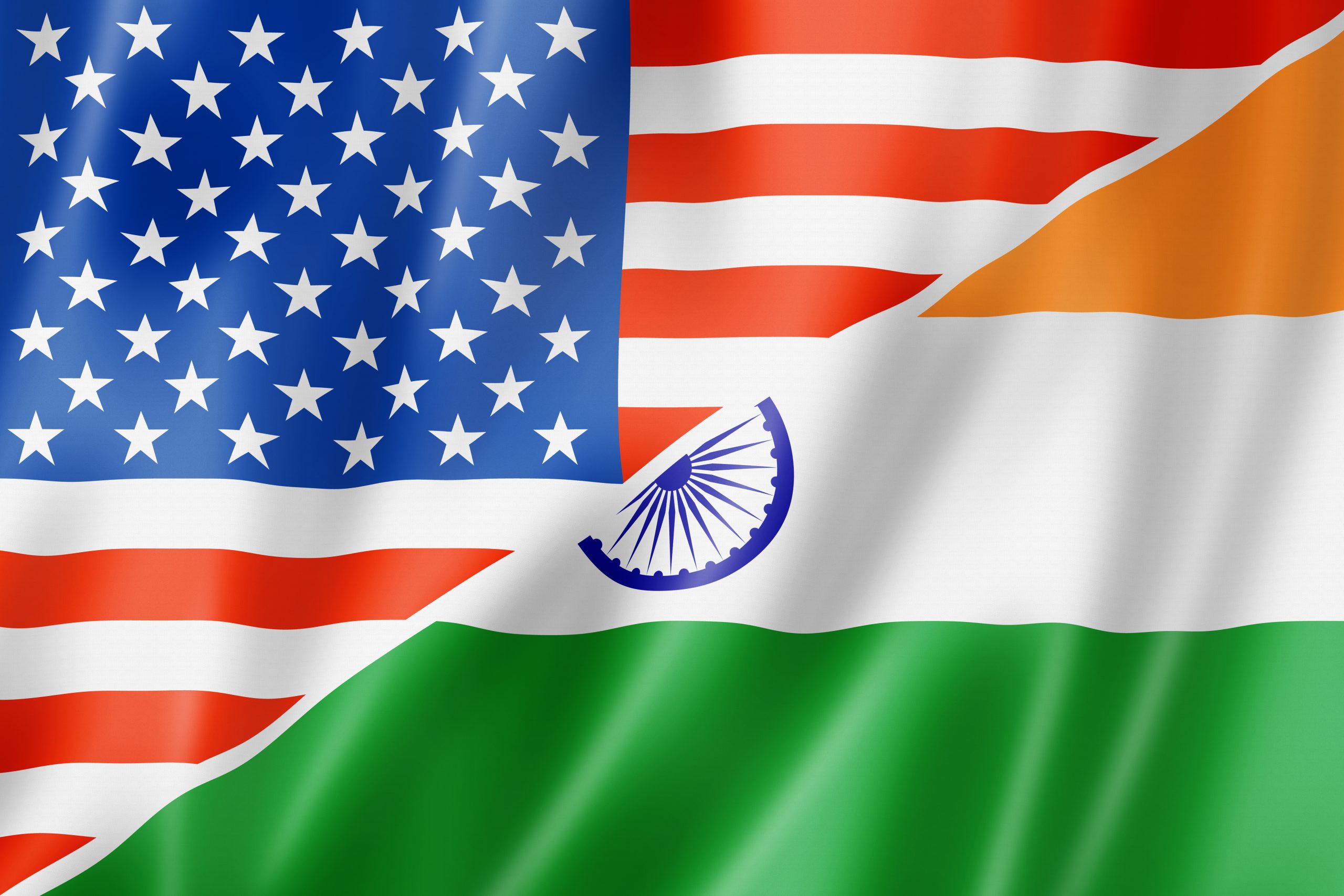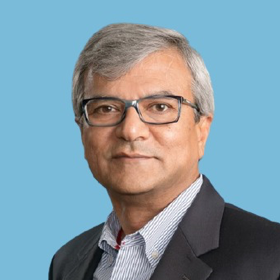“The Amendment has tried to streamline some patent procedures in India. However, the Indian patent laws and rules are still not applicant friendly.”
 The Indian Ministry of Commerce and Industry, which administers the Department for Promotion of Industry & Internal Trade, published changes to its 2003 Patent Rules in its Official Gazette on March 15, 2024. These rules are known as the 2024 Patent (Amendment) Rules (hereinafter “Amendment”). This article analyzes key provisions of the Amendment in light of U.S. patent rules and practices.
The Indian Ministry of Commerce and Industry, which administers the Department for Promotion of Industry & Internal Trade, published changes to its 2003 Patent Rules in its Official Gazette on March 15, 2024. These rules are known as the 2024 Patent (Amendment) Rules (hereinafter “Amendment”). This article analyzes key provisions of the Amendment in light of U.S. patent rules and practices.
1) Statement and Undertaking Regarding Foreign Applications
The pre-existing Indian patent law and rules require the applicant to file an undertaking that would keep the Controller of Patents informed of the related applications filed outside India. This information had to be provided within six months from the date of filing the Indian application. Additionally, within six months of the Controller’s request, the applicant had to supply the prosecution history and patentability details of the foreign applications. However, there was no provision for an extension of time. Consequently, the Controller held discretionary power to condone any irregularities in such submissions.
In the United States, there is no requirement to provide the prosecution history or patentability details of the counterpart foreign applications. On the other hand, the United States requires filing an Information Disclosure Statement (IDS) citing prior art or other information that may be “material” for determining patentability of the claimed invention. The IDS must be filed before the first office action or within three months of the filing date of a nonprovisional application. A delay in filing the IDS within the stipulated time can be condoned by paying a fee and filing an IDS. However, the fee and the IDS must be filed prior to the payment of the issue fee upon allowance of the U.S. application. The purpose of the IDS is to guarantee that the U.S. patent examiner has an opportunity to consider the information that is considered “material” by the applicant, or was considered by another patent office, in a counterpart or related patent application filed in another country.
The purpose of the IDS and India’s Statement and Undertaking are somewhat the same—to notify the Controller/Examiner about the prior art that may be “material” for determining patentability of the claimed invention. However, there are differences in the procedures and overall outcomes of the implementation of the provisions in both jurisdictions.
Under the pre-existing Indian rules, providing information within six months of corresponding foreign filings was a cumbersome process, especially when the counterpart applications were filed in multiple jurisdictions. The Amendment eased the process of recurrent filing of India’s Statement and Undertaking by requiring such filing to be done at the time of filing of the application and within three months of the issuance of the first objection report (first office action). Additionally, the Amendment includes a provision that the Controller/Examiner should use accessible and available databases to collect information about foreign applications. However, if the Controller/Examiner demands that the applicant provide such information, the reason to do so must be in writing. The Amendment also provides a provision to extend the time to furnish such information by the applicant upon payment of fees.
2) Divisional Application
The existing Indian provision regarding divisional applications states that the applicant can file a divisional application during pendency of the patent application either sua sponte or on objection raised by the Controller if “the claims of the complete specification relate to more than one invention.” Controllers have interpreted this provision literally, focusing on the phrase “claims of the complete specification.” Consequently, the interpretation has been that a divisional application can be filed when the claims of the application encompass multiple inventions. The disclosure of a plurality of inventions within the application, but not in the original claims, was not recognized as a valid basis for filing a divisional application.
According to U.S. law, a continuation application for an independent or distinct invention could be created from the disclosure or claims of a non-provisional application. Unlike in India, there are no restrictions in the United States regarding the basis for carving out a continuation application from the application’s disclosure. India, however, does not allow filing a continuation application.
Through the Amendment, India introduced a provision allowing divisional applications to extend beyond the plurality of inventions claimed in the application. Now, a divisional application may be initiated for distinct inventions disclosed in either the provisional or complete specification, or in a subsequent application. This provision is somewhat like the continuation application practice in the United States.
3) Examination of Application
Under the pre-existing rules, an applicant in India was mandated to submit a request for examination within 48 months of the date of the earliest priority. That meant that even after the international application had entered India as a national phase (which occurs within 31 months from the earliest priority date in India), there was additional time available to decide on paying the examination fee.
In the United States, a request for examination is filed along with the filing of the non-provisional application. This means that if the international application enters the United States as a national phase (which occurs within 30 months from the earliest priority date), the examination fee must be paid at the time of filing the non-provisional application.
The Amendment reduces the time to file the request for examination from 48 months to 31 months. The intent behind this change may be to expedite examination of the application.
4) Grace Period
India provides a 12-month grace period for disclosures made publicly by the inventor before filing a patent application under certain conditions, such as inventor’s own disclosure at an industrial or other exhibition notified by the Central Government through its Official Gazette, before a “learned society,” and publication in the transactions of such a society. There was no provision of notification of such prior art. Therefore, the applicant had to prove that the prior art falls within the grace period by filing an affidavit. Furthermore, since the Patent Act of India does not explicitly define terms like “learned society” or “transaction of such a society,” there has been ongoing debate and interpretation by inventors and Controllers of these terms.
Like India, the United States also offers a 12-month grace period for inventor’s own disclosures. However, unlike India, the United States does not restrict the inventor’s own disclosure for the grace period to specific criteria such as a learned society or public display in a government-notified exhibition. To seek the benefit of the grace period in the United States, the applicant must include a statement regarding such prior disclosure in the specification upon filing. Alternatively, the applicant can submit an affidavit or declaration to notify that the prior art falls within the provision of the grace period.
In the Amendment, India introduced a new form (Form-31) to implement the grace period rules. Specifically, the applicant is required to provide comprehensive details of the prior disclosure in Form-31. This modification somewhat aligns the practice in India with that in the United States.
5) Working Statement via Form-27
According to the pre-existing laws in India, a patentee or licensee is obligated to submit annually a statement of “working” a patented invention. In India, the absence of “working” a patent could be a basis for granting a compulsory license.
This obligation commences from the financial year immediately following the year in which the patent was granted. The statement must be furnished within six months before the end of each financial year, i.e., March 31, using Form-27. Additionally, Form-27 requires the patentee or licensee to approximate the revenue or value generated in India by “working” the patented invention, either through manufacturing or importation.
In the United States, there is no requirement for filing a statement for “working” a patented invention. One possible reason for this difference is that the U.S. law does not have provisions for compulsory licensing, unlike India.
The Amendment has brought significant changes to the timeline and details required for filing a “working statement” in Form-27. The timeline for submitting a “working statement” has been extended from once per year to once every three years. This change acknowledges the time and resources required for preparing and submitting Form 27, thereby reducing the burden on patent holders. Additionally, Form-27 no longer requires applicants to provide an approximate value accrued in India from “working” the patented invention. Furthermore, if the patented invention is not worked in India, the patent holder must now provide a reason for its non-working. Additionally, revised Form-27 includes a provision to indicate whether the patent is available for licensing..
6) Discretionary Powers of the Controller
India’s patent practice is characterized by a strict adherence to deadlines, particularly concerning national phase entry. Unfortunately, there is no provision to condone unintentional national phase filing delays.
Unlike the rigid filing deadlines in India, the United States provides a mechanism for delayed filing of an application due to an unintentional delay in the national phase entry.
By Amendment, India made significant changes in the rules related to condoning delay and granted discretionary powers to the Controller. The Controller of Patents is empowered to grant extension for any delay beyond the time prescribed under the Patent Rules for a period of up to six months. The Amendment, however, does not provide clarity whether “any delay” includes delay in the national phase entry. As per the clarification on the Amendment provided by Dr. Unnat P. Pandit, Controller of the Indian Patent Office (IPO) during an online webinar titled “IP Manthan on Overview of the key changes introduced in the Patent Amendment Rules 2024,” held on March 19, 2024, the IPO will not condone unintentional delay in a national phase entry in India.
Significant Risk Remains
The Amendment has tried to streamline some patent procedures in India. However, the Indian patent laws and rules are still not applicant friendly. Abandonment of applications due to delays, even if unintentional, poses a significant risk to applicants. The Amendment fails to minimize this risk. Unfortunately, there is no respite for an unintentional delay in the national phase entry.
Image Source: Deposit Photos
Author: daboost
Image ID: 24496607

![[IPWatchdog Logo]](https://ipwatchdog.com/wp-content/themes/IPWatchdog%20-%202023/assets/images/temp/logo-small@2x.png)


![[Advertisement]](https://ipwatchdog.com/wp-content/uploads/2024/04/UnitedLex-May-2-2024-sidebar-700x500-1.jpg)
![[Advertisement]](https://ipwatchdog.com/wp-content/uploads/2024/04/Artificial-Intelligence-2024-REPLAY-sidebar-700x500-corrected.jpg)
![[Advertisement]](https://ipwatchdog.com/wp-content/uploads/2024/04/Patent-Litigation-Masters-2024-sidebar-700x500-1.jpg)

![[Advertisement]](https://ipwatchdog.com/wp-content/uploads/2021/12/WEBINAR-336-x-280-px.png)
![[Advertisement]](https://ipwatchdog.com/wp-content/uploads/2021/12/2021-Patent-Practice-on-Demand-recorded-Feb-2021-336-x-280.jpg)
![[Advertisement]](https://ipwatchdog.com/wp-content/uploads/2021/12/Ad-4-The-Invent-Patent-System™.png)






Join the Discussion
2 comments so far. Add my comment.
Ronald
April 5, 2024 10:21 amI have been somewhat surprised to learn that, for the purpose of the newly-added provision of Rule 24B(1)(vi) of the Patent Rules, the relevant “filing” date appears to be that of the actual entry into national phase in India of a PCT application. In other words, the new 31-month deadline appears to be immediately applicable (one could as a matter of fact say “retroactively” ) to PCT applications that have been filed prior to March 15, 2024 and only enter the national phase in India on or after that date. Interestingly, Rule 24B(1)(vi) however fails to specifically refer to a “filing in India” and does not include any “Explanation” note as for instance found for instance in Rules 10, 12(1A) or 13(6) of the Patent Rules, which would have been a welcome clarification.
This is somewhat confusing considering that, for PCT applications having entered the national phase in India, the international filing date (or priority date as the case may be) is considered as the relevant date triggering the deadline to request examination, not the actual date of entry into national phase in India. In effect, this leads to unequal treatment between domestic applications filed in India prior to March 15, 2024 and PCT applications that have likewise been filed prior to March 15, 2024 but only enter the national phase in India on or after March 15, 2024. I struggle a bit to understand the rationale and the “immediacy” of the change in the Patent Rules for PCT Applicants is a bit surprising.
Anon
March 28, 2024 08:53 amPerhaps a medium-level quip:
“In the United States, there is no requirement to provide the prosecution history or patentability details of the counterpart foreign applications”
This is not true.
US applicants are required to submit all references known that MAY impact patentability of a US application. This “all references” is not limited to items of prior art per se, and does include foreign examiners’ views on related applications.
Add Comment